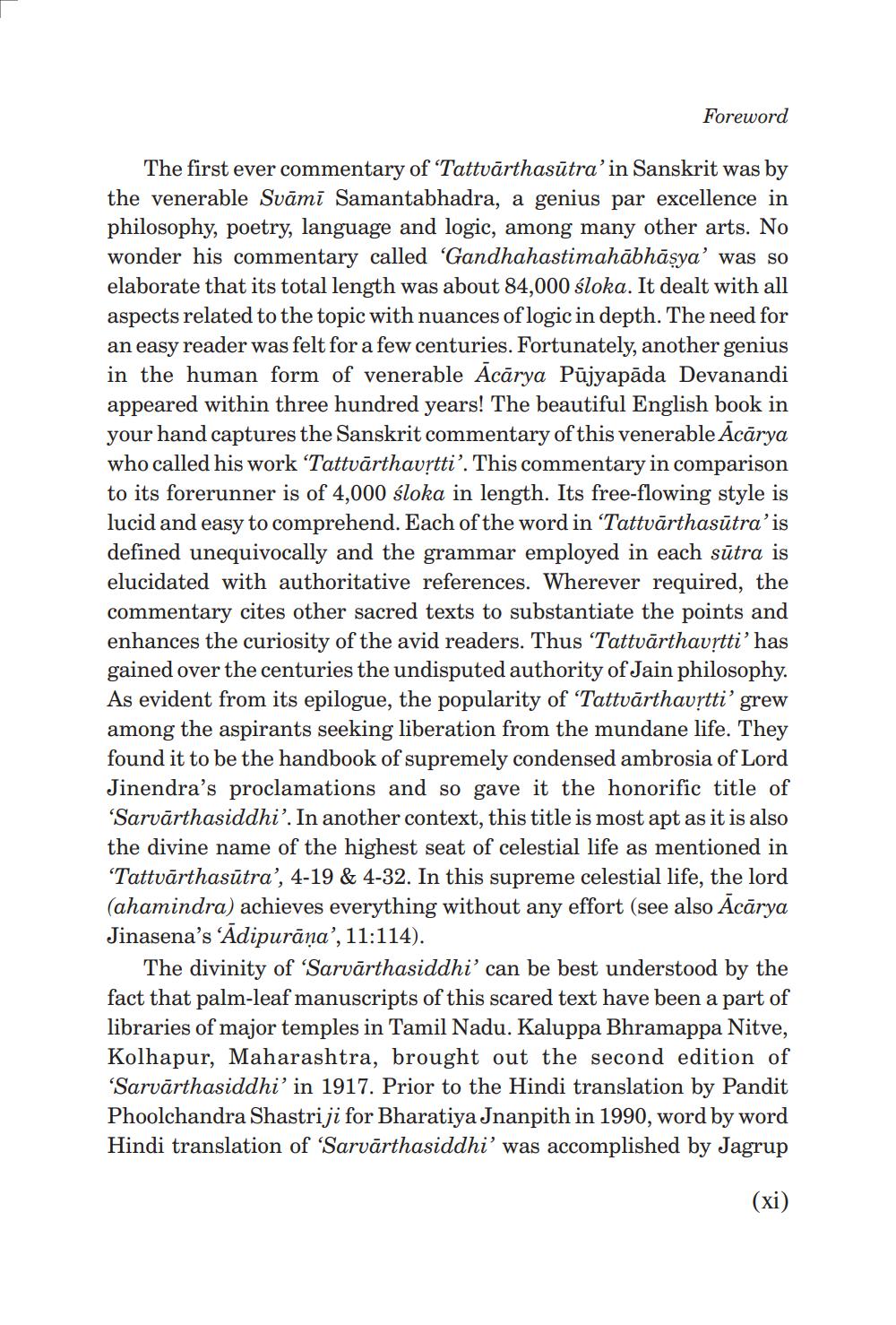________________
Foreword
The first ever commentary of Tattvārthasūtra'in Sanskrit was by the venerable Svāmī Samantabhadra, a genius par excellence in philosophy, poetry, language and logic, among many other arts. No wonder his commentary called 'Gandhahastimahābhāsya' was so elaborate that its total length was about 84,000 śloka. It dealt with all aspects related to the topic with nuances of logic in depth. The need for an easy reader was felt for a few centuries. Fortunately, another genius in the human form of venerable Acārya Pūjyapāda Devanandi appeared within three hundred years! The beautiful English book in your hand captures the Sanskrit commentary of this venerable Acārya who called his work 'Tattvārthavrtti’. This commentary in comparison to its forerunner is of 4,000 sloka in length. Its free-flowing style is lucid and easy to comprehend. Each of the word in 'Tattvārthasūtra' is defined unequivocally and the grammar employed in each sūtra is elucidated with authoritative references. Wherever required, the commentary cites other sacred texts to substantiate the points and enhances the curiosity of the avid readers. Thus 'Tattvārthavrtti' has gained over the centuries the undisputed authority of Jain philosophy. As evident from its epilogue, the popularity of 'Tattvarthavrtti' grew among the aspirants seeking liberation from the mundane life. They found it to be the handbook of supremely condensed ambrosia of Lord Jinendra's proclamations and so gave it the honorific title of ‘Sarvārthasiddhi'. In another context, this title is most apt as it is also the divine name of the highest seat of celestial life as mentioned in 'Tattvārthasūtra', 4-19 & 4-32. In this supreme celestial life, the lord (ahamindra) achieves everything without any effort (see also Ācārya Jinasena’s ‘Adipurāņa', 11:114).
The divinity of 'Sarvärthasiddhi' can be best understood by the fact that palm-leaf manuscripts of this scared text have been a part of libraries of major temples in Tamil Nadu. Kaluppa Bhramappa Nitve, Kolhapur, Maharashtra, brought out the second edition of Sarvārthasiddhi' in 1917. Prior to the Hindi translation by Pandit Phoolchandra Shastriji for Bharatiya Jnanpith in 1990, word by word Hindi translation of 'Sarvārthasiddhi' was accomplished by Jagrup
(xi)




